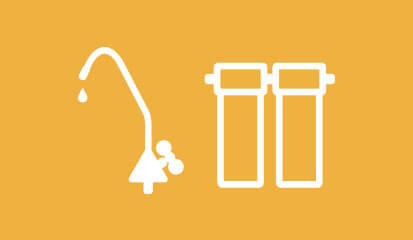What’s in my water?
City Water
Municipalities remove bigger particles such as leaves and silt from water and also disinfect it with chemicals to eliminate disease causing organisms. As a result, city water may contain:
- Chlorine or chloramines – used by municipalities to filter and disinfect water. These chemicals can leave behind an unpleasant taste and odor.
- Fluoride – added to protect teeth and prevent germs.
- Metals and other contaminants – may be picked up as water flows through pipes to your home. See well water list below for examples of other potential contaminants.

Well Water*
Private wells are not subject to water guidelines. As a result, it is recommended to test your well annually because of constantly changing ground conditions. Well water may contain:
- Arsenic – undetectable smell and taste, but may lead to nerve, heart, skin and blood vessel damage.
- Metals – rusty color and smell, creates a metallic taste.
- Nitrates – undetectable smell and taste, may cause brain damage in infants.
- Silt/sediment – visible particles and cloudy water.
- Coliform Bacteria – undetectable, associated with E. coli.
- Fluoride – undetectable, may lead to tooth discoloration.
- Hardness – spots on dishes, dry skin, leads to stains and higher appliance bills.
- Cysts – cause abdominal pain.
- Lead – may lead to nerve damage and high blood pressure.
- Chemicals – such as atrazine, benzene and lindane: undetectable but may have multiple health effects.
- Pharmaceuticals – enter water through the waste stream.
* Sources:



